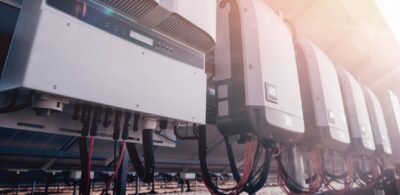AEMC determinations allow energy storage technologies to play greater role in the National Electricity Market
22 July 2021
The Australian Energy Market Commission (AEMC) released two determinations on July 15, which recognise the changing nature of the National Electricity Market (NEM) and the increasing role of energy storage in the provision of critical system services:
- Draft Rule Determination on the National Electricity Amendment (Integrating Energy Storage Systems into the NEM) Rule 2021; and
- Final Report on the National Electricity Amendment (Fast Frequency Response Market Ancillary Service) Rule 2021.
The draft rule change recognises the need for energy markets to evolve to accommodate the two-way flow of energy, and is designed to better integrate energy storage, hybrids and aggregated generation and storage units (such as virtual power plants) into the NEM. If implemented, the draft rule change will affect existing and new participants and create a new, technology-neutral category of market participant. It will also remove some of the additional cost, complexity and duplication currently faced by such technologies in working within the existing rules.
The second determination is a final ruling, which introduces two new market ancillary services to reward and drive further innovation in faster response technologies (such as batteries) to help control sudden and unplanned changes in power system frequency.
Both determinations will be welcomed by aggregators, developers and investors in batteries and hybrid projects, and will help unlock some of the untapped potential that these new technologies can contribute to the energy transition in Australia.
Integrating Energy Storage Systems into the NEM
The draft rule determination is the latest stage of a process initiated by the Australian Energy Market Operator (AEMO) in August 2019 to update the National Electricity Rules (NER) – to provide greater clarity for how new technologies and business models, such as batteries and hybrid systems, register and participate in the NEM.
The draft rule change proposes a number of reforms, including:
- Integrated Resource Provider: Introduction of a new, technology-neutral category of registered participant, the Integrated Resource Provider (IRP), which would cover a range of participants with two-way energy flows such as grid-scale storage, hybrid projects, and aggregators of small generation and storage units (virtual power plants).
- Aggregators may register as IRPs: Enabling aggregators of smaller generating and storage units (less than 5MW) to participate more broadly in the NEM, including through the provision of ancillary services from generation and load, if registered as an IRP, and moving the MSGA category into the new IRP category.
- Recovery of non-energy costs: Amendment of the framework for the recovery of non-energy costs to ensure a more consistent and equitable approach across participation categories and technologies. Currently grid-scale batteries are charged non-energy costs on the basis of two separate gross meter flows (generation and load), whereas other categories are charged on a net basis.
The AEMC is inviting submissions on the draft rule determination until 16 September 2021. The final rule determination is due to be made by 28 October 2021 and the rule changes are expected to come into effect 18 months thereafter, on 28 April 2023.
Why is the rule change needed?
Australia’s energy system is in rapid transition from a centralised coal generation system to a more diverse and de-centralised system – dominated by large and small scale renewables, supported by a range of energy storage business models and technologies. As the NER were initially designed for an industry dominated by large centralised generators, with very little storage and primarily one-way energy flows, the rules need to evolve with the changing generation mix, to facilitate new technologies and the increasing amount of storage and two-way energy flows in the NEM.
The existing registration and dispatch procedures for grid scale storage are complex, duplicative and costly, for both participants and the market operator. Therefore, the reforms are designed to streamline the procedures, remove any barriers to entry, and provide greater clarity for how energy storage and hybrid systems, register and participate in the NEM.
What are the key effects?
The key impacts of the proposed rule change include:
- Storage and hybrid facilities will no longer need to register and participate in the NEM under two separate categories (Market Generator and Market Customer). Connected with this change is owners of storage and hybrid facilities will no longer need to provide two separate bids (one for each category) in the dispatch process.
- Any new participant providing storage or hybrid energy services with a capacity of more than 5 MW will be required to register under the new IRP category.
- Existing participants providing storage or hybrid energy services with a capacity of more than 5 MW and registered as both a Market Generator and Market Customer in relation to the same facility will be required to re-register as an IRP.
- The Market Small Generation Aggregator (MSGA) category will be folded into the new IRP category and aggregators of small generation and storage units, including household batteries, will no longer be excluded from providing ancillary services and will be allowed to participate in the ancillary services market through the IRP registration. This should drive further investment in distributed energy resources, as the owners of small batteries will be able to participate in aggregation schemes and earn additional revenue through aggregators’ ability to more fully participate in the NEM and ancillary services markets.
- There will be more flexibility for hybrids to manage their own energy from different technologies behind the connection point, with dispatch to be assessed on an aggregate basis at the connection point rather than separately for each asset. This will enable hybrids to divert energy to storage that may otherwise be curtailed, and to use stored energy to firm up lower than forecast output.
- Non-energy costs associated with operating the power system will be recovered on a more consistent and equitable basis based on gross consumed energy and/or gross sent out energy in an interval, irrespective of participant category. Currently, recovery of non-energy costs for grid-scale batteries is based on registration in two separate participant categories (without netting of energy flows), whereas for small scale storage participants registered under the MSGA category it is based on a single category and a net metered energy flow.
What is the impact on participants and projects?
If implemented, the proposed rule change will impact both new and existing participants for facilities which provide storage or hybrid energy services with a capacity of more than 5 MW.
New participants in respect of such facilities will be required to register under the new IRP category.
Existing participants, where registered as both a Market Generator and Market Customer in relation to the same facility, will be required to re-register as an IRP, which may result in additional costs for existing projects.
Other participants in respect of facilities which do not meet these requirements may elect, but will not be obliged, to transfer from Market Generator or Market Customer to an IRP.
The AEMC has not yet outlined how the transition from dual registration to the IRP registration will be effected, nor the timeframe for the transition to occur following the proposed implementation of the change in April 2023.
Significantly, the creation of the IRP participant category foreshadows the eventual creation of a single “trader” category as part of the Energy Security Board’s Post 2025 Electricity Market Design Project. With an increasing number of new projects incorporating energy storage or hybrid technologies (and many such projects already existing) it seems likely that the new IRP category will be heavily used, which may assist in a more gradual transition to a single “trader” category in due course.
Fast Frequency Response Market Ancillary Service
The second of the two AEMC determinations (the Final Report on the National Electricity Amendment (Fast Frequency Response Market Ancillary Service) Rule 2021) introduces two new market ancillary services (‘very fast raise’ and ‘very fast lower’) (Fast Frequency Response or FFR) under the existing Frequency Control Ancillary Services (FCAS) arrangements.
With the decline in inertia provided by traditional thermal generators, there is an increasing need for the availability of FCAS to help AEMO stabilise and maintain a secure system following sudden and unplanned events. The two new market ancillary services will require a faster response time (less than 6 seconds) than the current ‘fast raise’ and ‘fast lower’ services, and are perfectly suited to being provided by batteries and other energy storage systems.
The arrangements for registration, scheduling, dispatch, pricing, settlement and cost allocation for the new FFR services will be the same as for existing ‘fast raise’ and ‘fast lower’ services.
This rule change is the result of a request by Infigen Energy and will be implemented in two stages:
- AEMO is to revise the Market Ancillary Services Specification (MASS) by 19 December 2022 to specify the detailed description and performance parameters for the new ‘very fast raise’ and ‘very fast lower’ services.
- The new markets for FFR services will commence on 9 October 2023.
The creation of these new markets recognises the broader role that energy storage can play in the energy transition, and will help to underpin investment in new energy storage and other FFR capable technologies in Australia.
Key takeaways
The pace of change in the NEM is accelerating and while all eyes are on the market reforms promised by the ESB’s Post 2025 Electricity Market Design Project, these rule changes help to secure the NEM and ensure investment signals are strong for energy storage and other new technologies.
Developers and investors in new projects will need to carefully consider the future impact of these changes on project economics. It is likely that many new energy storage and hybrid projects will need to continue to register under both the Market Generator and Market Customer participant categories and plan to re-register as an IRP later. Similarly, providers of system services should ensure that any new contracts do not prevent them from participating in new FFR markets where appropriate.
Existing projects should consider the impact of the proposed changes on existing contracts and any available contractual mechanisms (such as change of law regimes) to mitigate any adverse impact of the proposed changes.
Authors

Partner

Special Counsel
Tags
This publication is introductory in nature. Its content is current at the date of publication. It does not constitute legal advice and should not be relied upon as such. You should always obtain legal advice based on your specific circumstances before taking any action relating to matters covered by this publication. Some information may have been obtained from external sources, and we cannot guarantee the accuracy or currency of any such information.


